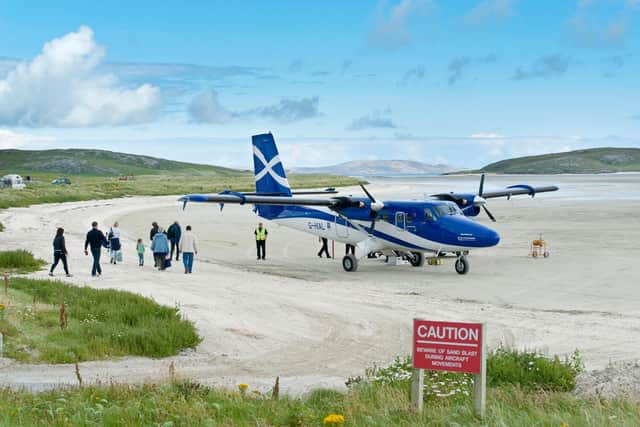Book review: Scotland’s Wings, by Robert Jeffrey
Robert Jeffrey describes his book as “just one enthusiast’s idiosyncratic look at the story of some of the experimenters, pilots, planes and airfields of former times in Scotland” – and his is indeed a quirky style. His flypast through Scotland’s rich aviation history contains some entertaining musings as well a few fascinating first-hand anecdotes and surprising facts.
However, even with the disclaimer that the book makes no claim to be comprehensive, the narrative has a habit of making disconcerting jumps between subjects – the literary equivalent of mid-air turbulence? – with much detail about some and disappointingly brief mentions of others.
Advertisement
Hide AdOver 200 pages, Jeffrey takes us from the country’s earliest flights to its potential as a future space rocket base, taking in the two world wars and the development of homegrown aircraft and internal air routes.


Much of this has been well-chronicled elsewhere, but the author highlights the breadth of Scottish innovation, from a Fifer who took to the skies in a hot air balloon just a year after the Montgolfier brothers in 1784 to the 1930s Weir in Glasgow – the one featured in Hitchcock’s The 39 Steps, according to Jeffrey – to the Denny hovercraft built in Dumbarton in the 1960s.
In one eyebrow-raising passage, Jeffrey recalls an elderly public relations chief for German airline Lufthansa discussing with journalists how to eat oysters as they dined at the Rogano restaurant in Glasgow during the promotion of its new Frankfurt route in the 1960s: “The Fuhrer chewed his.”
Also on a Nazi theme, in 1936 the first international flight to Renfrew Airport – Glasgow’s predecessor, whose runway is now part of the M8 – was a Junkers carrying the German football team, complete with a swastika on the fuselage.
I was also struck by some extraordinary early aviation antics, such as a crew member having to parachute to the ground when the first airship flight between Britain and the US arrived from East Lothian in 1919 because the landing party in Long Island were inexperienced in handling them.


Other nuggets include Barra’s famed beach runway not being unique, with one on Harris in regular use in the late 1960s.
Advertisement
Hide AdThe book also notes The Scotsman’s backing for Highlands air pioneer Ted Fresson who established the first flights to Orkney in 1933, and our reporting of the rather less successful attempts to send mail by rocket in the Western Isles the following year.
There are plenty of familiar and unfamiliar facts to enjoy along Jeffrey’s trajectory, once you adjust to his style, along with some odd contentions, such as casting doubt that Elvis Presley landed at Prestwick Airport in 1960.
Scotland’s Wings – Triumph and Tragedy in the Skies, by Robert Jeffrey, Black & White Publishing, £14.99.
Comments
Want to join the conversation? Please or to comment on this article.